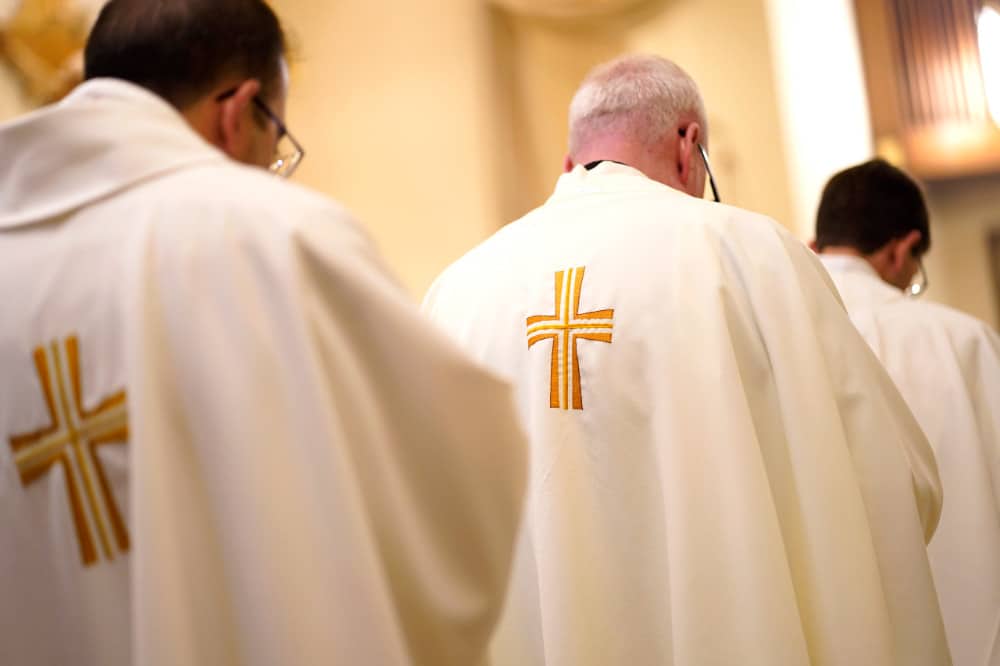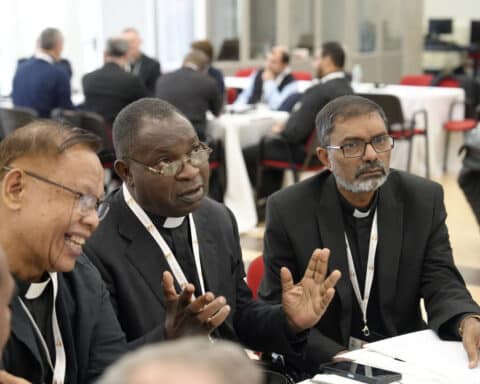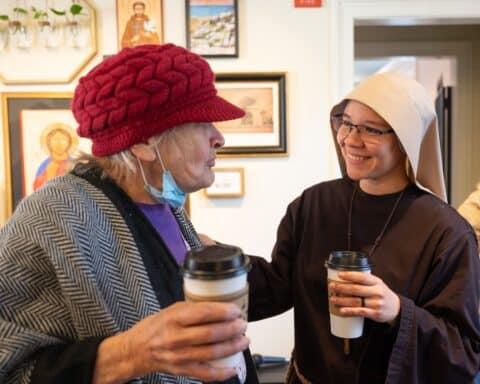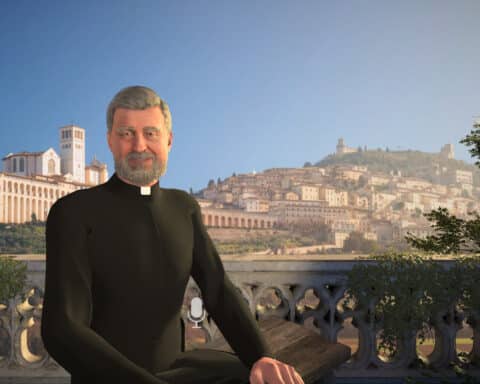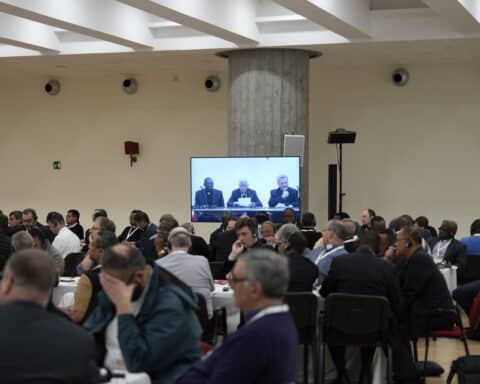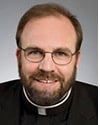
— Kevin, Northridge, California
Answer: In the first place, it is good to make a distinction. Diocesan priests do not make a vow of poverty, whereas priests in religious orders do. As for diocesan priests, they are certainly encouraged to live simply and not make it a priority to accumulate wealth. Most diocesan priests receive a modest salary of $35,000 to $40,000 annually. However, and in addition, most of their major expenses are covered by the parish or diocese. This would include lodging, food, medical and dental insurance and a certain percentage of a retirement fund. Generally, priests are expected to buy their own clothes, car and personal items not directly associated with their ministry.
As for religious priests, they do take a vow of poverty. However, this does not mean they live in some kind of destitution. Rather, it means that they own nothing personally. If they do receive an income from teaching, parish ministry and the like, the money goes to the community, not to them personally. From their religious community, they receive basic essentials such as lodging, food, clothing, medical insurance and so forth. If they have use of a car, it belongs to the community, not them. All necessary expenditures must be approved and covered by the religious community. Even their toothbrush, while for personal use, belongs to and is supplied by the community.
Although, in the past, religious men and women who staffed our schools and parishes in various roles were paid very little, this can no longer be the case. Parishes and other Catholic institutions are expected to pay a just wage so that religious communities are not lacking in what their members need. Hence, certain pay scales are set by the bishops’ conference and dioceses to reflect this. Especially today, medical insurance is extremely costly for priests and sisters, especially in religious communities and dioceses where the number of elderly priests and sisters is large.
It is a remarkable fact that the actual cost of a priest to most parishes runs close to $100,000. This is due largely to the high cost of medical insurance. Priests, especially, are not a healthy group. Stress and other factors contribute to poor health overall. Add to this the need to care for retired priests, many of whom are nursing home residents for some period, and it makes the medical costs very high. God bless the faithful who are generous and kind to their priests and religious!
The Rosary
Question: Did the Rosary come directly from God (or Mary) in some sort of divine revelation, or did it come from man (or woman)?
— Jack Wolock, via email
Answer: There is a legend that St. Dominic received the Rosary directly from Mary in a vision and that he devised and popularized it. But the earliest accounts of his life do not mention the Rosary, and the Dominican histories do not link it to him. However, the Rosary does seem to have become more prominent in the 13th century in which he lived. Praying with beads is actually a rather ancient practice extending well beyond and even before Christendom. The Rosary as we know it began to take its form in the Middle Ages. Some tie the practice to the desire of the faithful to imitate the monks who sang or recited the psalms in the Divine Office. Since the faithful generally could not read, the 150 psalms were represented for them by the cycle of 150 Hail Marys and Our Fathers accomplished in the recitation of three groups of five mysteries with 10 Hail Marys and one Our Father each.
The Rosary is a kind of “Gospel on a string” since the chief events of Our Lord’s life are pondered as the prayers are said. The Hail Mary, too, is a stitching together of verses about Mary as uttered by the Angel Gabriel and St. Elizabeth. In effect, we are in the school of Mary who teaches us and leads us deeper into the mystery of her Son and Our Lord, Jesus Christ. Given the state of our world, the recitation of the Rosary is essential.
Msgr. Charles Pope is the pastor of Holy Comforter-St. Cyprian in Washington, D.C., and writes for the Archdiocese of Washington, D.C. at blog.adw.org. Send questions to msgrpope@osv.com.

